Welcome to our newest Joy Makers! We’re so excited you’re here!
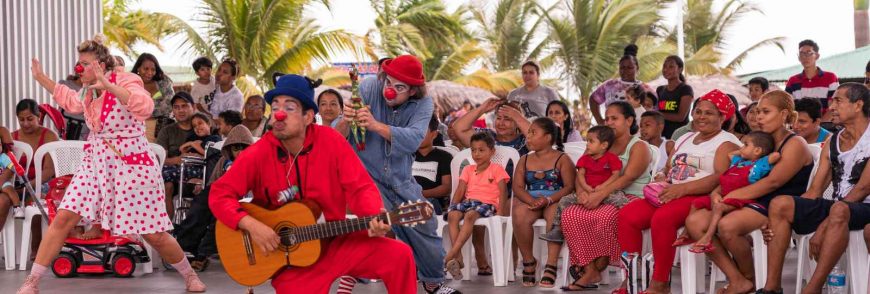
Can Clowning Combat Xenophobia? In Ecuador, We Give It Our Best Shot
Clowns Without Borders believes clowning transcends borders of race, religion, nationality, cultural history, class, gender, sexual orientation, and ability — and we proudly stand up against xenophobia.
In 2022, we partnered with the US Embassy-Public Affairs Division, Quito and Corporación Humor y Vida (Quito), to create a show to promote the Rights of the Child and combat xenophobia.
The team performed the show 14 times, for 4,648 people, in the cities of Quito, Esmeraldas, and Lago Agrio.
Read on to learn about xenophobia, how it affects communities in Ecuador, and how CWB clowns responded (including pictures and a video).

What is Xenophobia and How Has it Affected Ecuador?
Xenophobia is an irrational fear of people from other countries. It lacks understanding, empathy, and appreciation of cultural differences — and misinformation fuels it.
There are plenty of examples of xenophobia in the United States. One example is the violence and discrimination experienced by Asian Americans (and people thought to be Asian American) during the pandemic.
Links Between Xenophobia and Racism
- Xenophobia and racism both involve prejudice and discrimination against individuals or groups based on characteristics such as their nationality, ethnicity, or race.
- Both xenophobia and racism can lead to exclusion, marginalization, and inequality, and can cause serious harm to individuals and communities.
- Xenophobia and racism often reinforce each other. For example, someone who is xenophobic towards immigrants may hold negative stereotypes about their race or ethnicity, and vice versa. In addition, economic insecurity, political polarization, and media portrayals can fuel xenophobic or racist attitudes.
In Ecuador, xenophobia has led to conflict as host communities fear immigrants will take away jobs, housing, or food security (see Diego’s Story).
Diego’s Story
Diego, 10, lives in Esmeraldas, Ecuador. In the last few years, many migrants and refugees from Venezuela have settled in his town.
He hears his parents complain that there are not enough jobs, houses, or food for new arrivals. Clashes are starting to become violent.
When the clowns come to perform in the village center, Diego wonders if he can go.
“Come, join us,” one clown says. “Laughter is for everyone.”
Diego and his parents stand with his neighbors — from Ecuador and Venezuela. They all laugh together.

Xenophobia and Gender Discrimination
By December 2022, Ecuador had absorbed over 500,000 Venezuelan people, making it the 3rd largest host country for Venezuelan refugees after Colombia and Peru.
Around half of the Venezuelan immigrants who come to Ecuador are women and children and, unfortunately, they face ongoing threats to their safety.
When xenophobia is combined with gender discrimination, it can be even harder for women (and their children) to get the protection they need. As Amnesty International reported, this follows a trend of lack of protection for Venezuelan survivors of gender-based violence, first identified and Colombia and Peru.
The search for a better place to live is as natural as the search for love. The unnatural parts are borders, racism, and xenophobia.
Darina Robles, CWB Performing Artist

Can Clowning Really Combat Xenophobia?
We think so.
Clown shows certainly get warm and fuzzy feelings flowing between neighbors.
The Ecuador team did this through thoughtful production and setting an example of inclusivity. Specifically, the Ecuador team focused on cultural exchange and advocacy to promote understanding, empathy, and respect.
Who knew clowns could be such powerful agents of change?
Oh ya, you did!
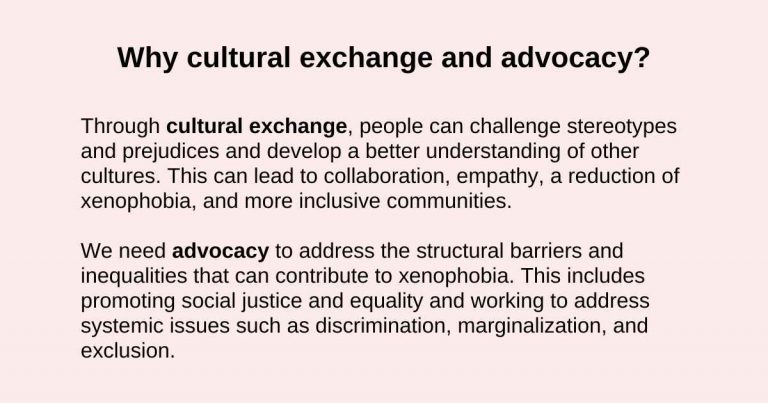
Let’s take a closer look at the show to see how clowning promotes love, acceptance, diversity, and human rights.
The Ecuador Show Went Like This…
The show was a play within a play.
Two groups of performers battled with each other for stage time until they ultimately learned they could collaborate.
The show included an imaginary wall, to represent the borders we build between ourselves.
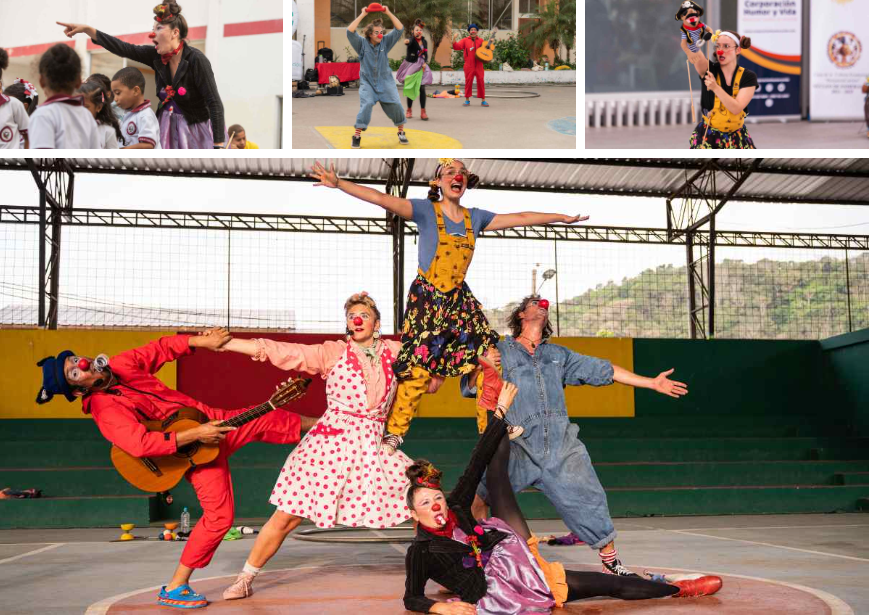
The Ecuador show in June 2022 featured a whopping 14 shows, 11 workshops, bringing laughter to 4,648 people. CWB Artists were: Arturo Gaskins, Rachel Wansker, Lucy Shelby, Diego Aguirre, Laura Oviedo, and Paty Galarza.
Our partners were the US Public Affairs Division-Quito and Corporación Humor y Vida (Quito).
Want to see more fun photos from the tour?
Check out the montage below!




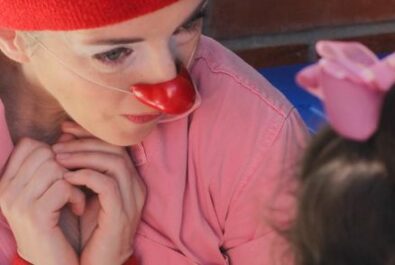
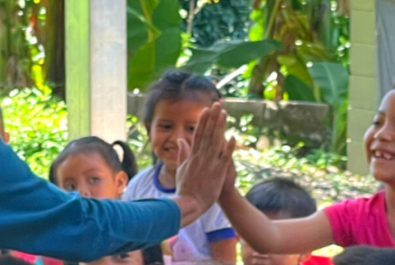
Looking forward to joining you one day! I’m a clown in training and can’t wait to serve smiles and bring laughter. Please keep me posted. Any recommendations on workshops would be appreciated.. I live in Canada 9 months of the year and Wales the other three months. Carry on Clowning, the world is crying out for laughter.
Thanks so much for reaching out, Menna. I’d recommend looking at the offerings of Therapeutic Clowns Canada Therapeutic Clowns Canada